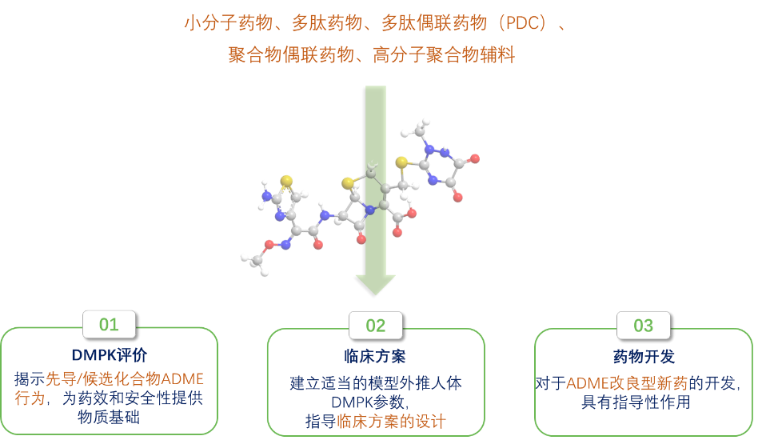Drug Analysis
Drug Analysis

Pharmaceutical Quality Control
According to customer needs, develop customized quality control methods, and establish detection methods suitable for testing items, including Liquid Chromatography, Gas Chromatography, Mass Spectrum, etc.
Impurity Content Detection
•Organic impurities: starting materials, by-products, intermediates, degradation products, reagents, ligands and catalysts, etc.;
•Inorganic impurities: reagents, ligands, catalysts; heavy metals or other residual metals; inorganic salts, other substances (such as filter media, activated carbon, etc.);
• Genotoxic impurities: sulfonic acid esters; volatile nitrosamines; hydrazine; epoxides; alkyl sulfates; halogenated hydrocarbons, etc., and identification of other unknown genotoxic impurities;
Identification of Impurity Components
The identification and structure analysis of unknown components and impurities in pharmaceuticals are carried out by using complete analytical testing platforms such as gas chromatography, liquid mass spectrometry, high-resolution mass spectrometry and elemental analysis ICP-MS.
Solvent Residue Detection
•The first class of solvents: benzene carbon tetrachloride; 1,2-dichloroethane; 1,1-dichloroethylene; 1,1,1-trichloroethane;
•The second type of solvent: acetonitrile; chlorobenzene; chloroform; cyclohexane; 1,2-dichloroethylene; dichloromethane; 1,2-dimethoxyethane, etc.;
• The third class of solvents: pentane, formic acid, acetic acid, ether, acetone, anisole, butyl acetate, 3-methyl-1-butanol, methyl isobutyl ketone, 2-methyl-1-propanol , Propyl acetate, etc.;
Isomer Detection
• Separation and detection of cis-trans isomers
• Functional group isomer separation and detection
• Chiral isomer separation and detection
Quality Standard Methodology
The verification contents include specificity, solution stability, linearity, limit of quantification, limit of detection, accuracy, precision, durability, range, etc. According to the client's needs, the method can be transferred, and the transfer plan and transfer report can be provided.
• Method Development
•Methodological validation
• Methodological transfer
Stability Study
With its own sample storage facility, a sample management system ensures that all samples are kept safe and secure. All samples are stored in a certified constant temperature and humidity box, and the temperature is controlled within ±2°C of the set temperature; the humidity is controlled within ±5% of the calibrated relative humidity; equipped with an automatic monitoring system for 24-hour monitoring. According to the client's needs, the stability study plan and test report can be provided.
•High temperature, high humidity, light test
•25℃±2℃ / 60% RH±5%RH
•40℃±2℃ / 75% RH±5%RH
•30℃±2℃ / 65% RH±5%RH
Non-clinical DMPK
Covering small molecule drugs, peptide drugs, peptide drug conjugates (PDC), polymer conjugate drugs, polymer excipients, etc.
• Rapid high-throughput pharmacokinetic (PK) studies
• Combination pharmacokinetic (PK) studies
• Toxicokinetic (TK) studies
• Bioavailability studies in model animals


